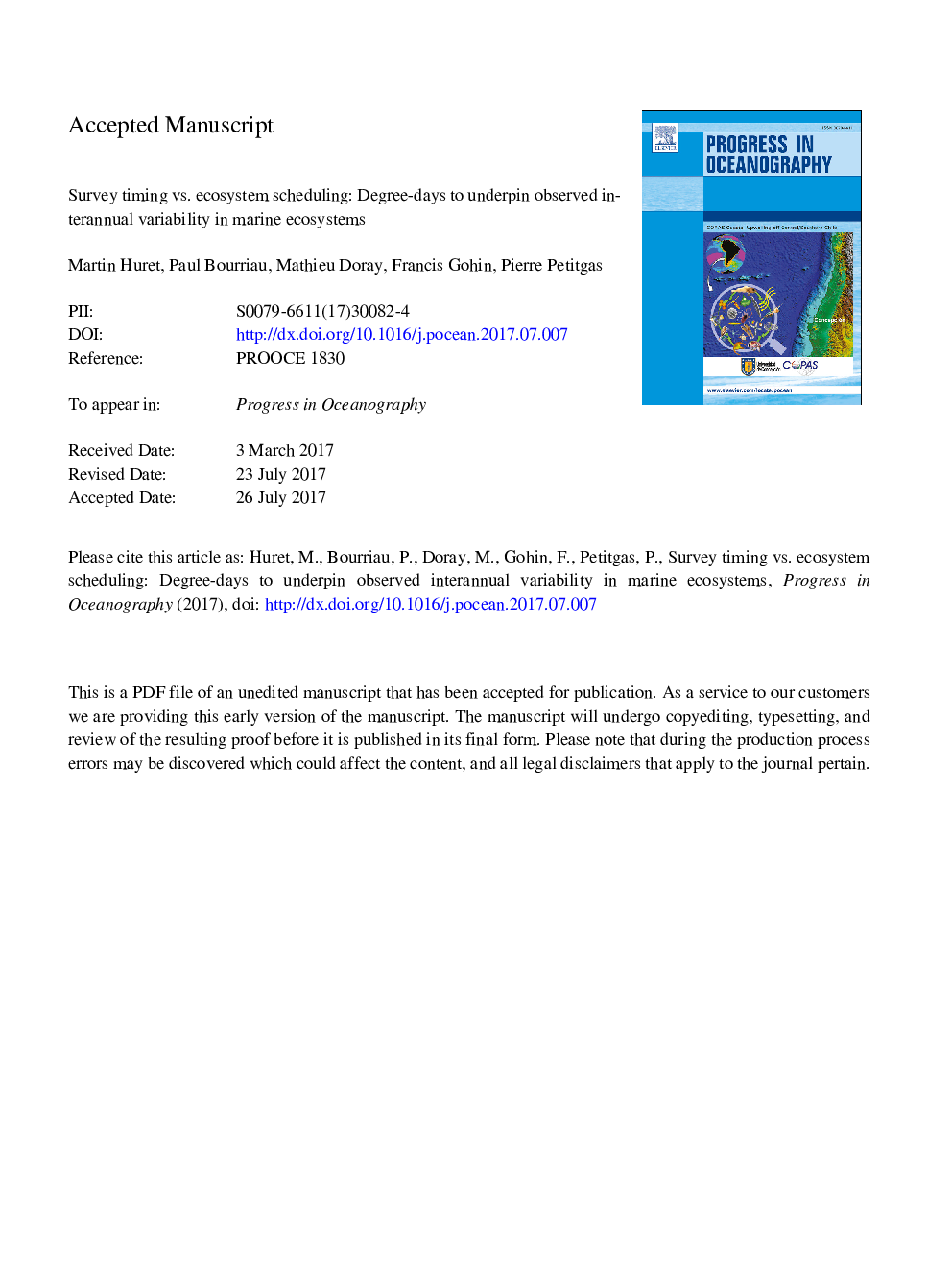| کد مقاله | کد نشریه | سال انتشار | مقاله انگلیسی | نسخه تمام متن |
|---|---|---|---|---|
| 8886587 | 1627892 | 2018 | 36 صفحه PDF | دانلود رایگان |
عنوان انگلیسی مقاله ISI
Survey timing vs. ecosystem scheduling: Degree-days to underpin observed interannual variability in marine ecosystems
ترجمه فارسی عنوان
زمان بندی نظرسنجی در مقابل برنامه ریزی اکوسیستم: دوره های آموزشی برای ایجاد تغییرات بین سال های مشاهده شده در اکوسیستم های
دانلود مقاله + سفارش ترجمه
دانلود مقاله ISI انگلیسی
رایگان برای ایرانیان
کلمات کلیدی
بررسی اکوسیستم ماهی کولی، ساردین، ناباروری، دمای سطح دریا، روز درجه خلیج بیسکی،
موضوعات مرتبط
مهندسی و علوم پایه
علوم زمین و سیارات
زمین شناسی
چکیده انگلیسی
Fishery annual surveys are shifting towards integrated ecosystem surveys. However, monitoring the whole ecosystem once a year entails special attention to the interpretation of observations, because they only represent a snapshot in the seasonal dynamics of the environment, of a species, or any dynamic process of interest. The dependency of this snapshot to the timing, but also to the duration, of the survey with respect to this seasonal dynamics needs to be considered. Fish stock assessment is only little impacted by the observed timing within a given season, whereas warming, stratification, plankton bloom occurrence, or fish fecundity, are processes rapidly changing especially in spring. Firstly, from independent satellite data, we described the seasonal and interannual Sea Surface Temperature (SST) variability in the Bay of Biscay in spring around the annual PELGAS surveys. Our results revealed that the in-situ surface temperature snapshot from a given survey may be strongly misleading on the existing spatial pattern, blurring the latitudinal temperature gradient, with potential impact in e.g. species habitat modelling. Secondly, based on these survey-independent SST data, we proposed a methodology to position annual surveys in the environment spring schedule. Our temporal indicator is based on a degree-day metric, computed as the cumulated temperature from the previous winter date with minimum annual temperature. The annual degree-day is then compared to the climatology of the degree-day metric to correct the actual date of survey to an environment date. The methodology was spatialised to take into account both latitudinal shift in phasing of seasonality, and rapidly changing conditions in the environment during the survey itself. Finally, we tested the methodology to refine the description of anchovy and sardine spawning phenology, as well as spawning spatial distribution for particular years such as hot year 2003. More generally, this is an example of how synoptic, independent data from operational oceanography, as a background history of the environment dynamics, can be used to improve the interpretation of biological observations in marine ecosystems.
ناشر
Database: Elsevier - ScienceDirect (ساینس دایرکت)
Journal: Progress in Oceanography - Volume 166, September 2018, Pages 30-40
Journal: Progress in Oceanography - Volume 166, September 2018, Pages 30-40
نویسندگان
Martin Huret, Paul Bourriau, Mathieu Doray, Francis Gohin, Pierre Petitgas,
